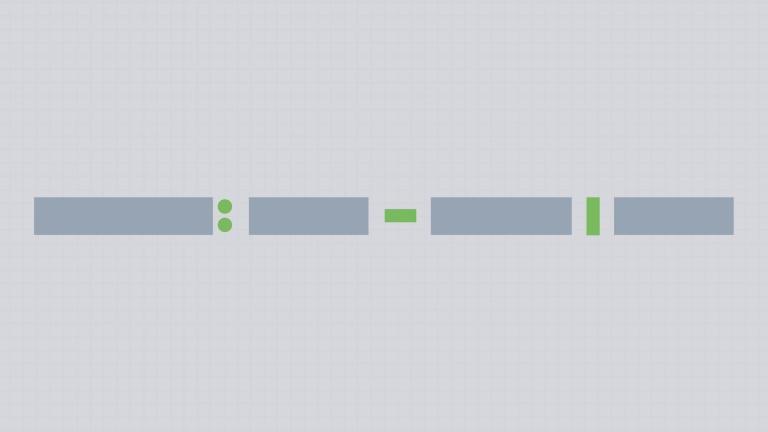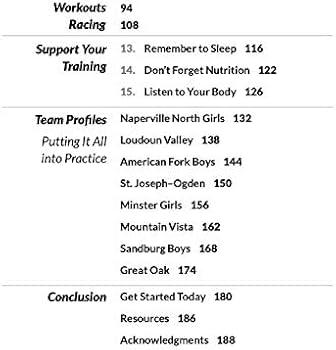Introduction
In the quest for excellence in golf, players often emphasize the importance of practice and physical fitness. However, a growing body of research indicates that structured academic training can significantly enhance golfing abilities. This article examines how integrating academic knowledge—covering theoretical concepts, biomechanics, course management, and psychological strategies—into traditional golf training can elevate performance. By exploring how cognitive insights and analytical methods complement physical practice, we aim to demonstrate the substantial benefits that a structured educational framework offers golfers in terms of skill development and overall proficiency. Ultimately, this discussion will underscore the diverse advantages of merging hands-on experience with academic understanding to advance golf education.
Understanding Golf Theory and Practice
Grasping the theoretical foundations of golf is crucial for players aiming to improve their game. Academic courses focused on golf theory explore aspects such as ball flight physics, swing mechanics, and performance psychology. By engaging with these concepts, golfers can better understand how elements like grip pressure and stance influence their play. This knowledge empowers players to critically evaluate their strengths and weaknesses while devising targeted improvement plans.
Golf practice extends beyond mere physical execution; it also involves strategic analysis as part of one’s routine. Players benefit from studying course management techniques that consider factors like terrain variations, weather conditions, and individual capabilities. Developing a systematic approach to navigating the course enables informed decision-making that enhances performance. Key components include:
- Shot Selection: Weighing risk against potential rewards for each shot.
- Club Selection: Recognizing how different clubs impact distance and accuracy.
- Opponent Analysis: Observing others’ playing styles to adapt strategies accordingly.
Additionally, academic frameworks highlight mentorship’s role in mastering golfing skills. Collaborating with instructors who combine theoretical insights with practical experience provides invaluable guidance. This relationship cultivates an environment where players can explore advanced techniques while refining their mechanics through deeper game comprehension.
To illustrate key phases in skill development effectively:
| Development Stage | Main Focus Area | Aim Achieved | |||
|---|---|---|---|---|---|
| Fundamentals | Grip technique & posture alignment | Sustained consistency in striking the ball accurately. | |||
| Tuning Techniques | Swing rhythm & mechanics refinement | Aim for enhanced distance & precision. | |||
| Tactical Application | Coursed navigation & shot strategy formulation | Total game strategy enhancement | |||
Merging Techniques with Academic Insight
To excel at golf requires more than just focusing on its physical aspects—it necessitates a thorough understanding of its underlying theories as well. Academic education equips golfers with essential tools needed to analyze advanced techniques effectively within their gameplay context. This blend of theory into practice allows athletes to refine swing mechanics alongside putting strategies through methodical approaches rather than relying solely on instinctive actions.
A critical element lies within establishing systematic methodologies aimed at skill acquisition through focused study sessions where golfers examine various performance models such as:
- Biomechanics: Comprehending motion physics along with body dynamics affecting swing efficiency.< / li >
- < strong >Athletic Psychology:< / strong > Cultivating mental resilience alongside concentration levels necessary during high-pressure situations.< / li >
- < strong >Statistical Analysis:< / strong > Leveraging stroke averages combined together metrics related directly towards optimizing strategic planning.< / li >
< ul >Moreover utilizing resources available academically—including peer-reviewed journals instructional guides or even online courses—can greatly enhance one’s approach towards improving overall gameplay quality . The following table outlines vital academic resources complementing practical training efforts :
Resource Type< th /> Purpose< th /> Books< td /> Diving deeper into techniques along mental strategies.< td /> Online Courses< td /> A structured learning path covering swing analysis plus game theory.< td /> Research Papers< td /> Evidenced-based practices showcasing advancements found within sports science domains .< td /> Analytical Course Management Strategies Effective course management remains paramount when striving toward optimal performances throughout any given round played upon greens . It entails not only comprehending layouts coupled together environmental conditions but also integrating analytical methodologies enabling informed decision-making processes . By employing data derived from shot patterns average distances club selection histories ,players develop comprehensive tactics minimizing risks associated while maximizing scoring opportunities .
Enhancing Golf Skills Through Structured Learning
Improving Golf Performance Through Systematic Learning
Structured learning is essential for golfers aiming to elevate their skills. This approach not only imparts crucial theoretical insights but also hones techniques and strategic thinking, ultimately leading to superior performance on the golf course.
Key Considerations for Strategic Play
To maximize their strengths, golfers should focus on several critical factors:
- Coursing Layout and Geography: Evaluate the course’s design, including elevation changes, obstacles, and distances to greens.
- Meteorological Influences: Assess how elements like wind speed, precipitation, or temperature can impact gameplay.
- Competitor Insights: Analyze opponents’ habits and past performances to gain a strategic edge.
A significant element of strategy is shot selection. By maintaining comprehensive performance records, players can pinpoint scenarios where they excel or face challenges. For example, tracking success rates from various distances or with different clubs allows for a tailored shot selection strategy. A structured approach enhances decisiveness and confidence during play. Here are some metrics worth monitoring:
Distance (yards) Club Utilized Efficacy Rate (%) 100 Pitching Wedge 85% 150 7 Iron 78% 200 <
3 Wood < td >65%
Mental resilience and emotional intelligence are vital in managing the game effectively. By applying principles from behavioral psychology, golfers can enhance their strategic mindset and self-control. Techniques such as visualization exercises, pre-shot routines, and mindfulness practices help maintain concentration under pressure. Additional strategies include:
- < strong >Goal Setting: Define clear objectives for each round of play.
- < strong >Reflective Analysis: Review previous performances to identify improvement areas.
- < strong >Stress Management: Develop strategies to cope with challenges encountered during play.
The Importance of Mental Training in Skill Enhancement
The psychological aspect of golf is just as important as its technical components. Engaging in structured mental training significantly boosts athletes’ performance levels by employing techniques like visualization and positive affirmations that foster focus even in high-stress situations.Mental training equips players with tools necessary for managing anxiety commonly faced during competitions.
A personalized mental conditioning program can be developed through collaboration with sports psychologists or coaches who guide golfers on how to:
- Create achievable goals that inspire motivation. Practice breathing techniques that promote calmness.< / li > Engage in reflective analysis of past performances.< / li >
- Focused Skill Development: A systematic approach ensures that players concentrate on specific competencies necessary for improvement.
- Strategic Mastery: Understanding course management helps golfers make informed decisions during play, boosting confidence under pressure.
- Lack of Direction: Without a clear plan, practice sessions may become aimless and less effective.
- Poor Habit Reinforcement: Inconsistent practice can lead to the development of detrimental habits that hinder performance.
- Key Components of Structured Learning:
- Specific: Improve driving distance.
- Measurable: Increase by 10 yards.
- Achievable: Based on current performance.
- Relevant: Ties into overall game improvement.
- Time-bound: Achieve within two months.
- Personalized Feedback: Tailored tips on technique.
- Structured Lessons: A clear learning pathway.
- Accountability: Keeps you motivated and on track.
- Goal setting
- Regular practice routines
- Utilizing video analysis
- Visualization techniques
- Breathing exercises
- Pre-shot routines
Structured academic programs should integrate these elements so that athletes gain a comprehensive understanding of how mental states influence their game outcomes.
The significance of a supportive network cannot be overlooked either; recent research indicates a direct link between social support systems among golfers and improved performance outcomes:
< th colspan = "3" style = "text-align:center;" id = "table-header" < th style = "text-align:left;" id = "relationship-type" / tr / tbody / table / < p />
< p />
< p />
< p />By integrating mental conditioning alongside social support frameworks,
golfers can reach new heights in their performance levels,
highlighting the fact that success on the course relies not only on physical prowess but also on psychological strength.Enhancing Golf Performance through Academic Insights
Golfers can significantly improve their game by integrating academic principles into their training routines. This approach not only focuses on mastering essential techniques but also delves into advanced strategies and psychological insights that are crucial for success on the course.
The Role of Structured Learning in Golf
A structured educational framework allows players to gain a thorough understanding of both the physical and mental dimensions of golf. By participating in a tailored curriculum, golfers can refine their skills, leading to enhanced accuracy and greater driving distance.
Benefits of Structured Training
Pitfalls of Unstructured Practice
An analysis reveals that structured instruction is vital for skill enhancement in golf. By combining focused learning with an emphasis on key abilities, players can achieve significant improvements that go beyond mere skill acquisition—empowering them to reach their highest potential on the green.
Conclusion: The Future of Golf Training
The incorporation of academic instruction into golfers’ training regimens represents a revolutionary method for enhancing skills beyond conventional practices. Engaging with an extensive curriculum centered around advanced techniques, strategic thought processes, and biomechanical principles enables aspiring golfers to deepen their understanding of the sport. This educational model not only boosts physical capabilities but also nurtures a more analytical approach to gameplay—equipping players with the tools needed to tackle complex course challenges confidently and accurately.
As golf education continues to evolve, adopting academic methodologies will undoubtedly set new standards for future generations aiming for exceptional proficiency in this timeless sport. For those committed to advancing their game, investing in educational resources is crucial for unlocking one’s full potential as a golfer.
Unlocking Your Golf Potential: The Power of Structured Learning
Meta Title: Unlocking Your Golf Potential: Structured Learning Techniques
Meta Description: Discover how structured learning can enhance your golf performance. Explore techniques, benefits, and tips to unlock your true golfing potential.
Understanding Structured Learning in Golf
What is Structured Learning?
Structured learning in golf refers to a systematic approach to improving skills through organized practice, feedback, and progression. This method contrasts with casual play or unstructured practice, offering a roadmap to excellence.
– Goal Setting: Define clear, measurable goals.
– Practice Routines: Develop consistent practice schedules.
– Feedback Mechanisms: Utilize video analysis and coach feedback.
The Benefits of Structured Learning
1. Improved Skill Acquisition
Structured learning accelerates skill development through focused practice sessions. By concentrating on specific aspects of the game, golfers can effectively enhance their performance.
2. Enhanced Cognitive Understanding
Understanding the mechanics of the golf swing or course management strategies through structured learning leads to better decision-making on the course. When players know the “why” behind techniques, they can adapt more easily.
3. Increased Confidence
Having a solid grasp of the fundamentals and advanced techniques boosts a golfer’s self-efficacy. This confidence can translate into better performance during actual play.
Practical Tips for Structured Learning
Set SMART Goals
Using the SMART criteria (Specific, Measurable, Achievable, Relevant, Time-bound) can streamline your focus. For instance:
Develop a Consistent Practice Schedule
Establish a weekly routine combining technical, physical, and mental training. Ensure each session targets a different skill area to avoid stagnation.
Example Weekly Schedule
| Day | Focus Area | Activity |
|————|——————|———————————————|
| Monday | Short Game | Chipping and putting drills |
| Tuesday | Long Game | Driving range for technique refinement |
| Wednesday | Course Management | Play 9 holes with strategic-awareness focus |
| Thursday | Strength Training | Targeted exercises for golf fitness |
| Friday | Mental Game | Visualization and breathing exercises |
| Saturday | Competition | Friendly round or practice tournament |
| Sunday | Review | Analyze performance and adjust plan |
Utilize Technology
Incorporate tools such as golf apps, swing analyzers, and GPS devices to track progress and gather data.
The Role of Coaching in Structured Learning
Benefits of Working with a Coach
Engaging a qualified golf coach can dramatically enhance your learning experience. A coach provides:
Selecting the Right Coach
When choosing a coach, consider their qualifications, teaching style, and compatibility with your learning preferences. Look for someone who emphasizes structured learning methods.
Case Studies: Success Stories
Case Study 1: From Average to Amazing
Golfer: Sarah, a 28-year-old weekend player
Challenge: Inconsistent performance and lack of direction
Solution: After engaging a coach and adopting structured learning methods, Sarah focused on:
Outcome: Within six months, Sarah reduced her handicap by five strokes.
Case Study 2: Mastering the Mental Game
Golfer: Mike, a high school athlete
Challenge: Performance anxiety during tournaments
Solution: Mike incorporated mental conditioning into his structured learning, focusing on:
Outcome: Mike improved his tournament performance significantly, helping his team win the regional championship.
First-Hand Experience: My Personal Journey
As an avid golfer, I too embarked on a journey of structured learning. Initially struggling with consistency, I began working with a coach who emphasized a structured approach. I learned to set specific goals and developed a practice schedule that targeted my weaknesses.
Through this method, I witnessed significant improvements in my swing technique and course management skills. Regular feedback sessions allowed me to refine my strategies, making every round more enjoyable and rewarding.
Key Techniques to Leverage Structured Learning
Master the Fundamentals
Focusing on core techniques such as grip, stance, and alignment forms the basis for all subsequent learning. Allocate time in your practice schedule to revisit these fundamental skills regularly.
Explore Shot Shaping
Understanding how to manipulate ball flight can dramatically elevate your game. Practice various shot shapes (draws, fades, and high/low shots) to enhance versatility.
Shot Shaping Techniques Table
| Technique | Description | Drill |
|————-|——————————————–|—————————————–|
| Draw | Ball curves from right to left | Practice alignment and swing path |
| Fade | Ball curves from left to right | Focus on clubface position at impact |
| Low Shot | Lower trajectory for windy conditions | Adjust stance and swing to stay below |
| High Shot | Elevated trajectory for distance | Tee ball higher and adjust swing |
Develop Course Management Skills
Strategic thinking is as crucial as technical ability. Understand the layout of the course, make informed club choices, and anticipate challenges.
Conclusion (to be added by the author)
By embracing structured learning in golf, players can unlock their true potential, ensuring each practice session is purposeful and impactful. Implement these techniques and watch your golf game evolve, one swing at a time.
You might be interested in …
**Unlock Your Putting Potential: Inside the Revolutionary Ping Putting Lab Experience**
Custom Club Fitting Revolutionizes Putting at Ping Lab
Phoenix, Arizona – Step into the future of golf at the Ping Putting Lab, where a revolutionary custom club fitting experience is reshaping how golfers approach putting. Utilizing cutting-edge technology and expert insights, this lab crafts putters that are precisely tailored to match each golfer’s unique swing dynamics and performance aspirations.
“Our custom fitting process merges state-of-the-art technology with the unparalleled expertise of our Master Fitters,” shared John K. Solheim, Chairman and CEO of Ping. “This synergy enables us to design putters that not only enhance performance but also instill golfers with the confidence they need to sink more putts.”
The Ping Putting Lab boasts advanced fitting systems like SAM PuttLab and Quintic Ball Roll, which deliver real-time feedback on stroke mechanics, ball roll characteristics, and overall putting efficiency. Our Master Fitters meticulously analyze this data to pinpoint the perfect combination of putter head design, shaft flex, length, and grip tailored specifically for each player.
Golfers who have undergone the custom fitting journey at the Ping Putting Lab rave about their remarkable improvements in putting performance. Many have experienced a newfound consistency in their strokes, enhanced accuracy on target lines, and superior distance control. This transformation has not only boosted their confidence on the greens but has also led to lower scores across the board
Charley Hull’s Fan Support and Shane Lowry’s Triumph: A Golf Story
Charley Hull’s Fan Support and Shane Lowry’s Triumph: A Golf Story
What does it take to find true camaraderie amidst the cutthroat world of professional sports? A captivating YouTube video delves into the friendship between Walker Buehler and Max Homa, shedding light on the complex dynamics that bond and drive these golf stars. Join us as we explore the delicate balance of competition and camaraderie on the fairways, where friendships thrive amidst the pursuit of excellence.
Tavatanakit, Lindblad, Dryburgh share Evian lead
Tavatanakit, Lindblad, Dryburgh Share Evian Lead
Atthaya Thitikul, Madelene Sagstrom and Maja Stark seized a share of the lead after the opening round of the Evian Championship in France on Thursday. The trio fired rounds of 5-under 66 to sit atop the leaderboard after 18 holes at the Evian Resort Golf Club.
Thitikul, 19, is seeking her second major title of the season after winning the LPGA Chevron Championship in April. Lindblad, 29, is a two-time winner on the LPGA Tour, while Dryburgh, 29, is still searching for her first victory.
Other notables in contention include Nelly Korda, who is two strokes off the lead, and defending champion Minjee Lee, who is three strokes back.
The Evian Championship is the fourth and final major championship of the LPGA Tour season.






